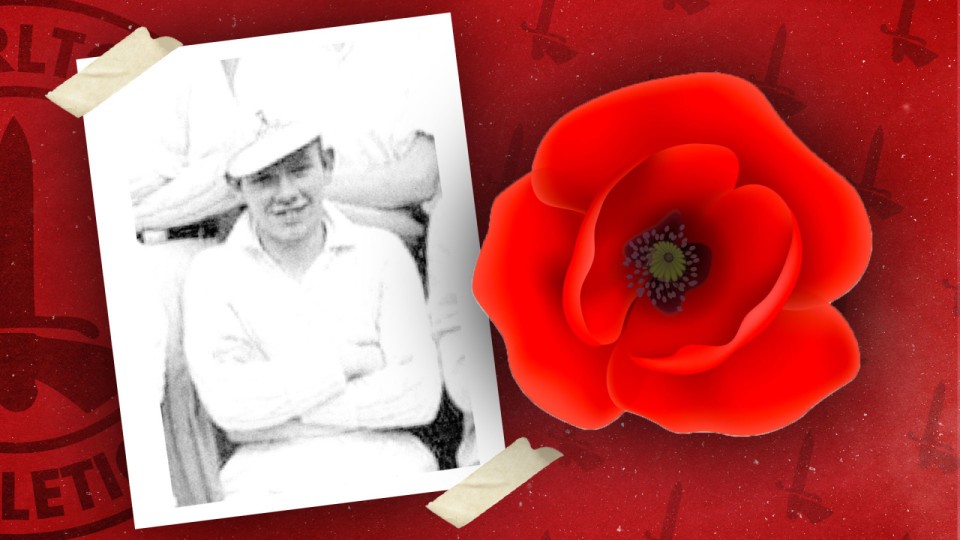The below article was originally published in the Doncaster Rovers edition of Valley Review on October 30th, 2021...
Over the past few years, the Charlton Athletic museum have put great effort into identifying our fatalities from the First World War and they are now commemorated in the alcove behind Sam Bartram’s statue.
We have also discovered two fatalities from World War Two. Neither were first-team players but were local boys and on Charlton’s book. Geoff Reynolds from New Eltham died of wounds received in Normandy in 1944, while Dartford-born Don Homer was killed in an air collision over Cornwall in 1943.
Thanks to RAF historian Mick Britton, we now know about a third WW2 fatal casualty but he was not a local. Fittingly for today’s game, he was raised close to the home of our visitors. We hope that fans of both clubs will remember Glynn Jones, along with all the other people who served and were lost, during the remembrance day ceremonies this coming fortnight.
Born into a North Wales mining family who relocated to the Yorkshire coalfield and settled in the village of Bentley, just outside Doncaster, Glynn Jones had the potential to become a star First Division footballer and prospective Wales international had World War Two not intervened.
Glynn attended Doncaster Grammar School where he excelled at sport, especially boxing, cricket and football, becoming 'victor ludorum', and he could probably have pursued a professional career in any of those sports on leaving school but he chose football and could have had his pick of a host of clubs who vied for his signature, finally opting to sign for top-flight Charlton Athletic. Addicks manager Jimmy Seed travelled from London to capture his signature in June 1939, just three months before the outbreak of WW2.
However, the outbreak of war prevented him making any first-team appearances for the Addicks although he did make guest appearances for several clubs, including Aldershot, Brentford and Millwall, for whom he once netted a brace of goals against Chelsea at Stamford Bridge. He could play at either right-half (right midfield) or on the right wing.
In 1942, Jones joined the RAF Volunteer Reserve where, after completing basic training, he was selected for aircrew training as an air gunner, eventually being posted to 460 Sqn. Royal Australian Air Force (RAAF), based at RAF Binbrook on the Lincolnshire Wolds south of Grimsby, who flew the mighty Avro Lancaster bomber.
This was the most senior of Bomber Command’s four Australian squadrons and its badge featured two unmistakable national symbols; the kangaroo and the boomerang.
As Binbrook was quite close to his home town, Glynn was able to make guest appearances for Doncaster Rovers when his duties allowed and he may have begun guesting for them during his training as nearby RAF Finningley.
At just after 10pm on March 30th, Sergeant Jones climbed aboard Lancaster mk III ND738 coded AR-E and settled behind the four Browning machine guns in its rear turret between their nine yards of belted ammunition which lined the sides of the rear fuselage. The aircraft, captained by Aussie Flight Sergeant Charles Haley Hargreaves, lifted off at 2219hrs. carrying a bomb load comprising a 2000lb ‘cookie’ and incendiaries for the target that night, which was the Bavarian city of Nuremberg.
This city had been selected by Bomber Command’s Commander-in-Chief Sir Arthur Harris (affectionately nicknamed ’Butch’ - short for Butcher - by his men) for attack not only for its industrial base, which included the MAN diesel works, but also because it was the symbolic home of the Nazi party who had held their rallies in its stadium.
Because it was at the extreme range of Bomber Command’s reach the controversial decision had been taken to fly a direct course across Germany, without any of the usual dog - leg feints, to keep the defenders guessing about the actual target, and the crews were aghast when this was revealed to them at their briefing. The long red line on the map pointing unerringly at Nuremberg spelled Danger and they knew it. However in mitigation they were told that the weather men could guarantee cloud cover all the way to the target. But they were to be proved wrong.
Interviewed by the Daily Mail seventy years later a former Chief of Air Staff, Sir Michael Beetham, who captained a Lancaster on the raid explained ‘The weather was better than expected (deep sigh). Dearie me.’ The forecast cloud cover broke up soon after crossing the Belgian coast leaving the bombers exposed in the bright moonlight all the way across Germany.
The 779 bombers formed a stream 70 miles long and once the German night fighters got in among them it was a massacre. By a cruel piece of bad luck they had been vectored onto a beacon just 15 miles of the bombers’ track and so actually converged with them thus negating the need for ground control.
One night fighter ace shot down six bombers in just 30 minutes; one every five minutes, indicating the ease of acquiring targets; they did not even have to use their radars, so even the single seat fighters without radar could be successfully deployed. Soon the route to the target was marked by the funeral pyres of burning bombers Lancasters and Halifaxes each with a crew of seven.
The German Junkers Ju-88 night fighters employed a new weapon known as Schrage Musik, upward slanting twin canon behind their cockpits which enabled them to attack from the blind spot directly beneath the bombers raking the fuselage or preferably lining up slightly off centre and setting the fuel tanks on fire in the certain knowledge that the main spar would
eventually burn through and the target would plunge to its doom. It is almost certain that Glynn Joneses Lancaster was attacked by this method as it exploded in mid -air most likely as a result of its bomb load having been detonated by the attack.
This was at 0100 hrs on March 31 at Emreuth, which lay on the approach to the target. All seven crew members were killed and Jones was buried at Durnbach War Cemetery. He was just 20 years old.
Altogether 107 bombers were lost that night with 545 aircrew killed (and over 100 more becoming prisoners of war) which is more than were killed during the whole of the Battle of Britain. If that was the RAF’s finest hour then the Nuremberg raid was its darkest.
The Butcher’s bill was inordinately high that night and the young life of Sgt. Glynn Jones of Doncaster and Charlton Athletic, was just a small part of it but for his and every family it was a devastating personal loss.
The inscription on his Commonwealth War Graves Commission grave stone, chosen by Glynn’s mother, reads:
HIS KINDLY THOUGHTS AND SWEET SMILE, WILL ALWAYS BE CHERISHED. HIS LOVING MAM
By Mick Britton Additional passages by Ben Hayes

